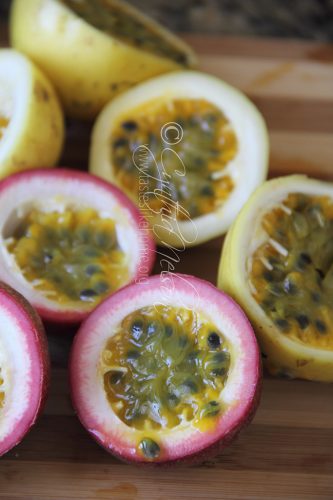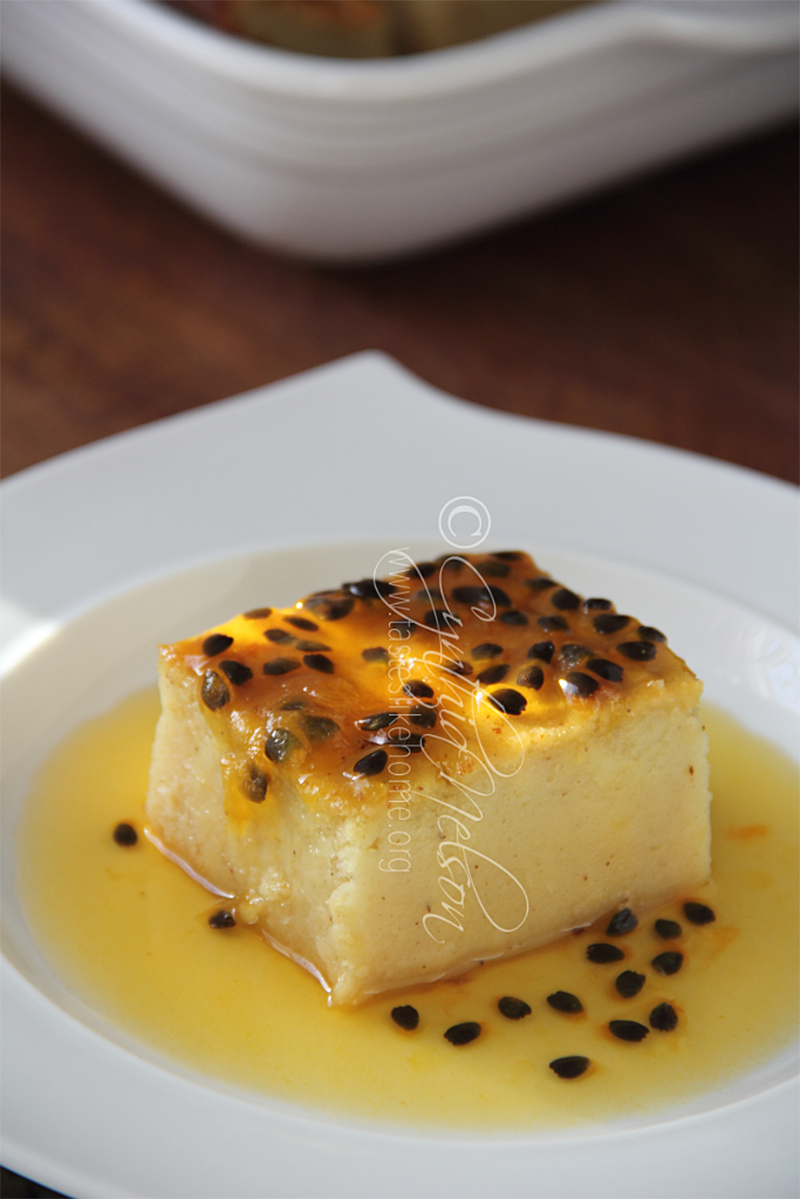 There are certain fruits that offer more enjoyment than simply eating as is. Passion fruit is one of them. And because it is inherently more tart than sweet, it is a fruit that works well in both sweet and savoury preparations. Like most people, my favourite way to enjoy passion fruit is in a drink, but every time they are in season, I also make a syrup/sauce with them to use in a variety of ways. Passion fruit sauce offers not only lots of natural flavour but tartness and sweetness that are both pleasing to the palate.
There are certain fruits that offer more enjoyment than simply eating as is. Passion fruit is one of them. And because it is inherently more tart than sweet, it is a fruit that works well in both sweet and savoury preparations. Like most people, my favourite way to enjoy passion fruit is in a drink, but every time they are in season, I also make a syrup/sauce with them to use in a variety of ways. Passion fruit sauce offers not only lots of natural flavour but tartness and sweetness that are both pleasing to the palate.
One of the custards featured in last week’s column was finished/dressed with passion fruit sauce. I have received many requests about making the passion fruit sauce and ways to use it.

The sauce is very easy to make – add the pulp and sugar to a pot and bring to a boil cooking for a certain period of time. The amount of sugar you add to the pulp will be dependent on how sweet or tart you want the sauce to be and the best way to judge this is to taste as you go along. When first mixed together as they heat up, I find the mixture tastes as if it has the right amount of sugar, however, when it cools, settles, and concentrates, the tartness really comes to the fore, therefore, take this into consideration when making the sauce.
One of my recipes uses 1 cup of passion fruit pulp and ¾ cup white granulated sugar. This combination gives tartness that cuts through the richness of certain desserts. Therefore, take into consideration what things will be accompanying the sauce.
Another recipe I make uses 1 cup of passion fruit pulp and 1 ¼ to 1 ½ cups of sugar, this gives sweetness that is not cloying sweet. There is good balance with the pronounced flavour of the fruit. I would use this combination if using the sauce to accompany pancakes or crêpes.
Here are the directions to make and store the sauce.
1. Add the pulp and sugar to a saucepot and place over medium heat. Using a wooden spoon, stir until the sugar is dissolved. Bring the pot to a boil and reduce the heat to low and simmer for 12 minutes. The sauce will foam, you can remove all or some of the foam. I generally leave it because a lot of the Vitamin A from the passion fruit is in the foam that gives passion fruit its rich colour.
2. Remove the pot from heat and let cool completely before transferring to a clean glass jar. Use right away or refrigerate. The sauce can be used cold, directly from the refrigerator.
3. The sauce will last as long as only clean, dry utensils are used to access it.
4. The sauce can be poured or drizzled over hot, cold or room temperature items. If poured over hot items, you will notice that it thins a little; that doesn’t take away from the potency of the sauce.
Here are some ways to use the sauce:
● Brush generously over pound cake as soon as it comes out of the oven
● Spoon over Greek yogurt, ice creams
● Mix into fruit salads
● Layer in trifle
● Garnish fruit soups
● Drizzle over chocolate cake or
chocolate ice cream, cheesecake, pavlova, custards, and puddings
● Stir into swank, iced tea and other fruit drinks for a complimentary flavour such as pineapple, orange, ginger, and mango
Tip: freeze the fresh pulp of passion fruit to make sauces, curds, drinks and sorbets all year round. When ready to use, simply defrost and proceed with recipe(s).
Cynthia
cynthia@tasteslikehome.org






